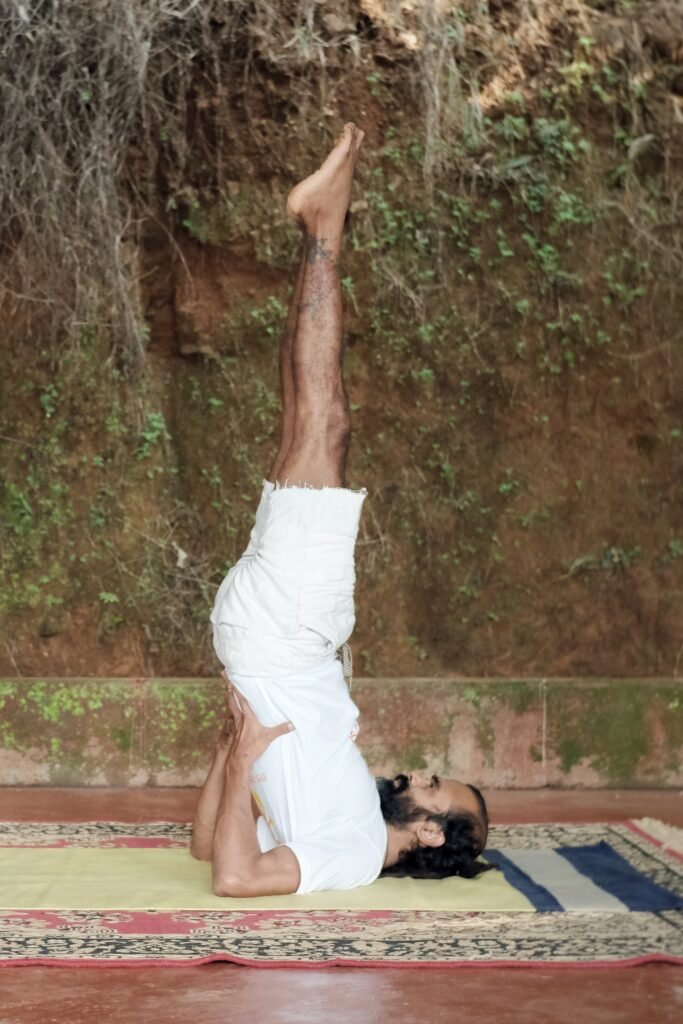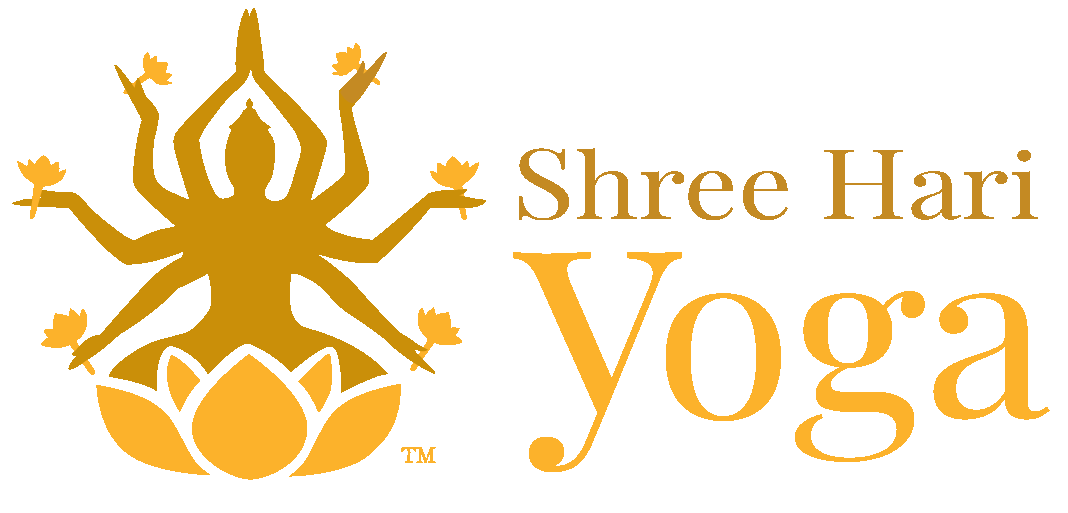
Three terms make up Sarvangasana: Sarva, which means “entire,” Anga, which means “body portion,” and Asana, which means “pose.”
This means “All Body Parts Pose” in English.
Because it benefits the entire body and the mind, Sarvangasana, also known as Shoulderstand Pose, is referred to as the “Mother of all Yoga Poses.”
Yoga poses that are considered to be at an intermediate level include Sarvangasana(shoulder stand pose).
Yoga practitioners should be somewhat at ease with several intermediate-level yoga poses to do this asana.
This pose, also known as “Kandharasana” or “Shoulderstand Pose,” is so named because the entire body is supported on the upper shoulders.
Since shoulder stand (Sarvangasana) is referred to as the “Mother of all Asanas,” it is true that it has numerous health benefits for our body.
There aren’t much yoga poses that are so good for us.
STEPS OF SARVANGASANA:
- As you exhale, bring your feet up toward your hips and curl your legs up against your thighs.
- Pull the abdominal muscles up while lifting the bottom half of the body vertically while using your hands as support (fingers under the hips and the thumbs above)
- Weight-bearing surfaces for the complete body include the palms, elbows, neck, and back of the skull (final position). In 4 seconds, finish the aforementioned actions while exhaling.
- Maintain this position for no more than two minutes while breathing regularly, slowly, rhythmically, and naturally.
- To get back to the beginning posture, slowly lower your hips toward the mat while inhaling for 4 seconds.
- Return to the starting position after releasing the hands from behind you.
- Take a few deep breaths, after which you should rest and breathe normally.
Health (Anatomical) Advantages:
- Strengthens Shoulders: Strengthens, tones, and stabilizes the shoulders while reversing sagging shoulders.
- Strengthens Neck: Strengthens neck to prevent stiff neck and/or a return of spondylitis.
- Wonderful for runners:
- Hamstrings, calf, and leg muscles are all toned.
- This yoga pose benefits athletes, especially runners, as it reverses blood flow to the legs.
- Running-related tension on the leg muscles is lessened thanks to this “reversed blood flow.”
- Back Strengthening: Lifting the back and maintaining body balance strengthen the back.
- Spines are strengthened due to their improved flexibility and strength, which helps the nervous system work better.
Health Advantages
- Stimulation: The thyroid and parathyroid glands are stimulated, which regulates the hormones in both men and women.
- Rejuvenates Brain: As the blood flow is reversed, the brain receives more blood.
- Cardiac: Heart muscles are stretched because the heart must work harder to pump blood to the extremities due to the reversed blood flow.
- Enhances Digestion: Relieves constipation and enhances digestion.
- Enhances Vision: The increased blood supply to the brain enhances vision.
- Reduces Body Weight: Burns fat in the buttocks, thighs, hips, and belly.
- Manages Symptoms of Various Disorders: Useful yoga pose for managing symptoms of thyroid disorders, asthma, reproductive problems, headaches and migraines, diabetes, insomnia, and hypertension.
- Relieves varicose veins, hemorrhoids, headaches, constipation, hypertension, insomnia, bronchitis, asthma, sinusitis, congestion, and depression.

(Shoulderstand Pose) Sarvangasana Contraindications:
- In Sarvangasana (Shoulderstand Pose), the entire body is raised up and balanced in the air with the help of shoulders, elbows and proper breathing. Given the upside down body position, it is important to understand this yoga pose’s impact on the body. Although there are numerous benefits of Sarvangasana, there are scenarios in which this yoga pose must not be practiced as listed below.
- Back Pain: Avoid this pose if one is suffering from severe back pain or spine injury.
- Spondylitis: Avoid this pose if one has spondylitis and/or under medical treatment for the same. But if spondylitis is mild, then this yoga pose can actually help heal the ailment under the guidance of an experienced yoga therapist.
- Heart Issues: Someone with heart problems, aged, has less flexibility or control on the body may want to avoid this pose or seek guidance from a yoga teacher.
- Internal Organs: If one has weak internal organs like the spleen, liver or kidney or enlarged thyroid should avoid this yoga pose.
- High Blood Pressure: Someone with high blood pressure or Migraine.
- Pregnant or Menstruating: Women who are pregnant and women during their menstruation.
- Throat or Ear Infection: Avoid this pose if someone is suffering from throat infection or ear infection as the flow of blood may bring discomfort to the muscles around the infected area.
Practical Advice for Sarvangasana:
- The best time to perform Sarvangasanais immediately before Halasana (Plow Pose).
- Muscle pain in the neck is common and to be expected. However, if your suffering is severe, use a folded blanket and position it beneath your shoulder and upper back.
- If you have trouble with balance at first, you can also try practising against a wall, which can support your body weight and lessen the strain on your neck muscles.
- Sarvangasana’s ideal ultimate position has the body’s entire length parallel to the ground.
- The shoulders, back of the neck, and head sustain the body’s weight.
- You are supported by your arms, your chest is tightly squeezed against your chin, and your legs are straight and at ease. But getting to this position takes time.
- Go slowly through the steps. Never exert more effort than you are capable of. Give your body the time it needs to acquire the necessary flexibility and strength. You’ll eventually find yourself practising positions that right now may seem unattainable to you.
